April 24, 2024

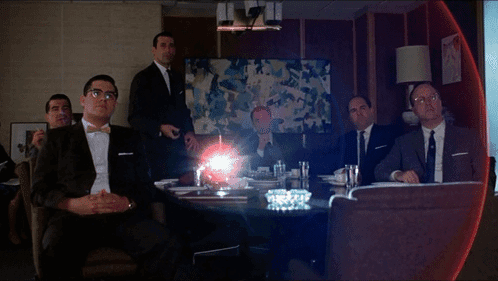
How do you sell a carousel slide projector in the 1960s – a decade when it already wasn’t considered the most high-tech product of its kind?
Legendary fictional Ad man Don Draper (a character based on American executive Rosser Reeves) did it. And he did it very well – without ever mentioning a single tech feature.
For context: Don Draper had to sell a new product by Kodak, which was initially called “The Wheel.” According to one of the stakeholders, it wasn't exactly seen as “exciting technology.”
Hang on to your hats, folks. You’re about to witness the best sales pitch in the history of television.
“My first job, I was in-house at a fur company with this old pro copywriter, Greek, named Teddy. And Teddy told me the most important idea in advertising was ‘new.’ Creates an itch. You simply put your product in there as a kind of calamine lotion.
But he also talked about a deeper bond with the product: nostalgia. It’s delicate, but potent. Teddy told me that in Greek nostalgia literally means ‘the pain from an old wound.’ It’s a twinge in your heart far more powerful than memory alone. This device isn’t a spaceship; it’s a time machine. It goes backwards, and forwards… it takes us to a place where we ache to go again. It’s not called the wheel, it’s called the carousel. It lets us travel the way a child travels - around and around, and back home again, to a place where we know we are loved.”
(If you’re interested, you can watch the entire pitch here.)
Notice how this pitch was entirely story-based. And the story told had nothing to do with how the product looked or the bells and whistles it had. It talked about the feeling the product would evoke and how meaningful the experience would be.
The simple meaning behind the word “carousel” can transport you to a different place in time. That’s how amazing stories are. In both life and business.
How Stories Quite Literally Control Our Brains
According to Liz Neeley, director at nonprofit production company The Story Collider, stories have the power to sweep us into whole new worlds and forget about our surroundings.
Functional MRI scans have revealed that when people listen to a story, their brains become very active. For example, the parts of the brain that handle emotions triggered by what they're hearing become active, as well as areas linked to movement. This happens especially during the parts of the story that evoke strong emotions.
Essentially, storytelling engages multiple brain networks beyond just language processing, making it a powerful tool for connecting with people on an emotional level.
The Perceived “Problem” with Stories

When we hear the word “stories,” we often think of long-winded tales that could potentially lull us to sleep. Some of us may think: this has no place in B2B sales.
Let’s debunk those myths one by one.
Stories don’t have to be long. You probably remember the famous 4-word story. For sale: Baby shoes. Never worn.
You’ve been telling stories in your marketing for so long you may not even realize you’re doing it. I don't mean you need to write a lengthy narrative of every single product to sell it.
As for B2B not being in story territory, 62% of B2B marketers value storytelling in marketing, especially content marketing. So, yes, there’s plenty of opportunity, everywhere, for you to tell stories across your whole funnel.
Authority-Building Content in Sales
You've probably heard the saying, "We sell to customers who buy." It's simple but profound. Delicate, but potent. Customers are ready to purchase when they've gathered enough information, feel confident in their decision, and perceive minimal risk.
When people reach out to you, it's a clear sign that they already know about your product or service enough to go deeper into details.
This is why authority-building content (usually top-of-funnel) doesn't have to be directly about your product. Instead, it can be about connecting with readers through information they care about.
For example, our blog is brimming with sales-related conversations and advice aimed at B2B sales teams, indirectly leading readers to understand our product's value later in the funnel.
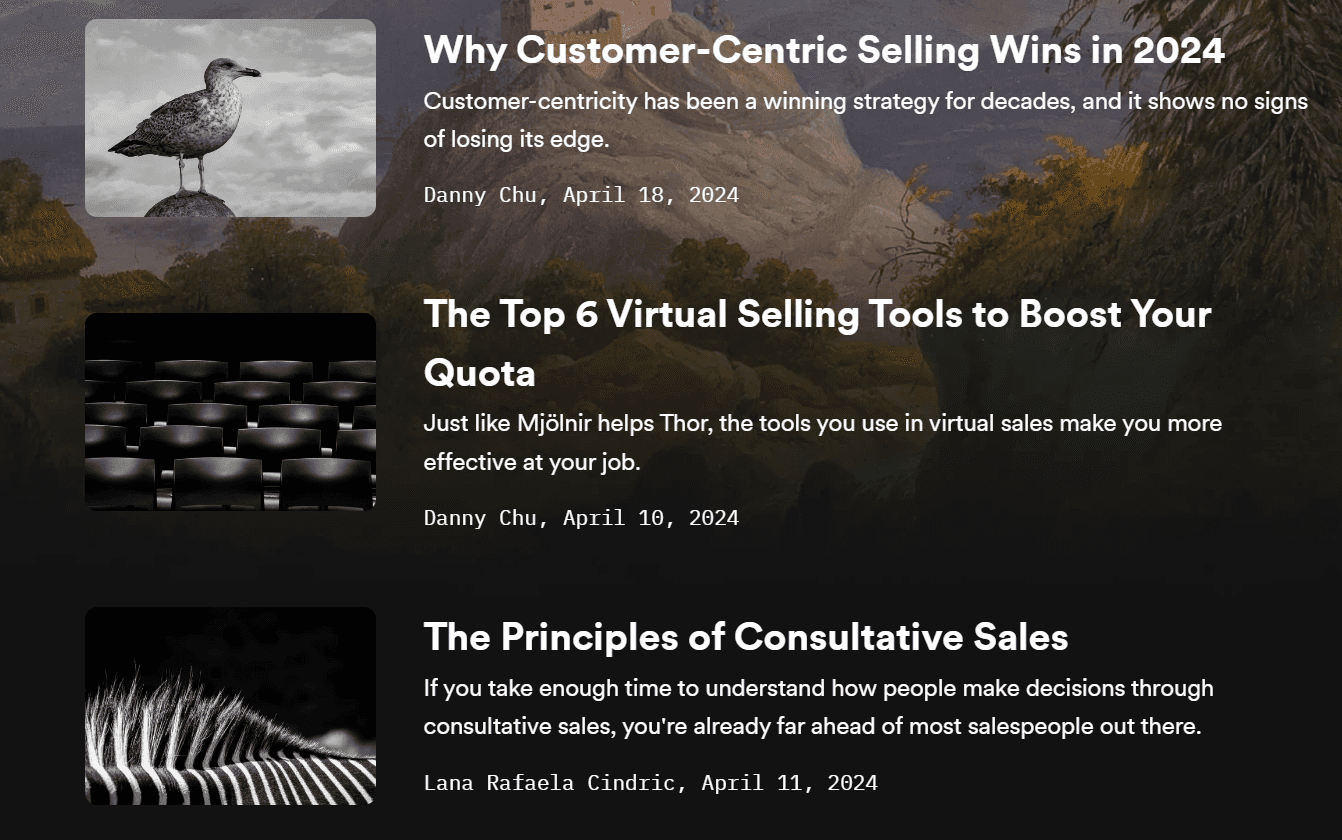
As you can see, we weave in stories, metaphors, examples, and seemingly unrelated connections wherever. This makes for a more engaging read, and consequently more engaged readers.
If your company leans towards visual content, that's great! Visuals not only educate your audience but also create a friendly connection. Whether through text or visuals, storytelling can guide people down the sales funnel.
The key is not to use sleazy sales tactics but to captivate your audience with engaging narratives that leave a strong hook for your product down the line.
With that in mind, where to weave in stories across your authority-building content?
Blog posts
Ebooks
Podcasts
Videos
Social media content
Webinars
And more.
Customer Success Stories
The most impactful stories are often those shared by others, especially when they resonate with our own experiences. Customer success stories epitomize this idea. They serve as compelling proof that your product or service has genuinely made a positive difference in someone's life.
Customer success stories come in several forms – from written testimonials to videos, images, and even numerical data. They can be seamlessly integrated into every stage of the sales journey. For example, they serve as persuasive social proof during prospecting efforts, captivating case studies during presentations, and compelling anecdotes during follow-ups.
While case studies present undeniable data, they don't have to be dry and devoid of emotion. Research from the London School of Business reveals that stories are far more memorable than statistics alone. People retain up to 70% of information when presented in a narrative format, compared to a mere 5-10% with statistics alone.
Consider establishing a dedicated storytelling hub where stakeholders can easily access success stories that resonate with them. When it's time to deliver your pitch, having this repository of compelling sales enablement narratives makes the process twice as effortless.
While additional nudges may still be necessary, having a wealth of proof at their fingertips significantly streamlines the decision-making process.
By the way, even a simple testimonial can serve as a mini success story, subtly guiding prospects towards your product like breadcrumbs scattered throughout your marketing materials. By strategically incorporating these stories into your content, you create a narrative that authentically connects with your audience and inspires action.
Where to use them?
Research libraries
Social media posts
Blog posts
Case studies
Sales decks
Your website’s testimonials section. This is a huge one. In fact, we’ve created our very own “Carousel” with praise from our best customers.
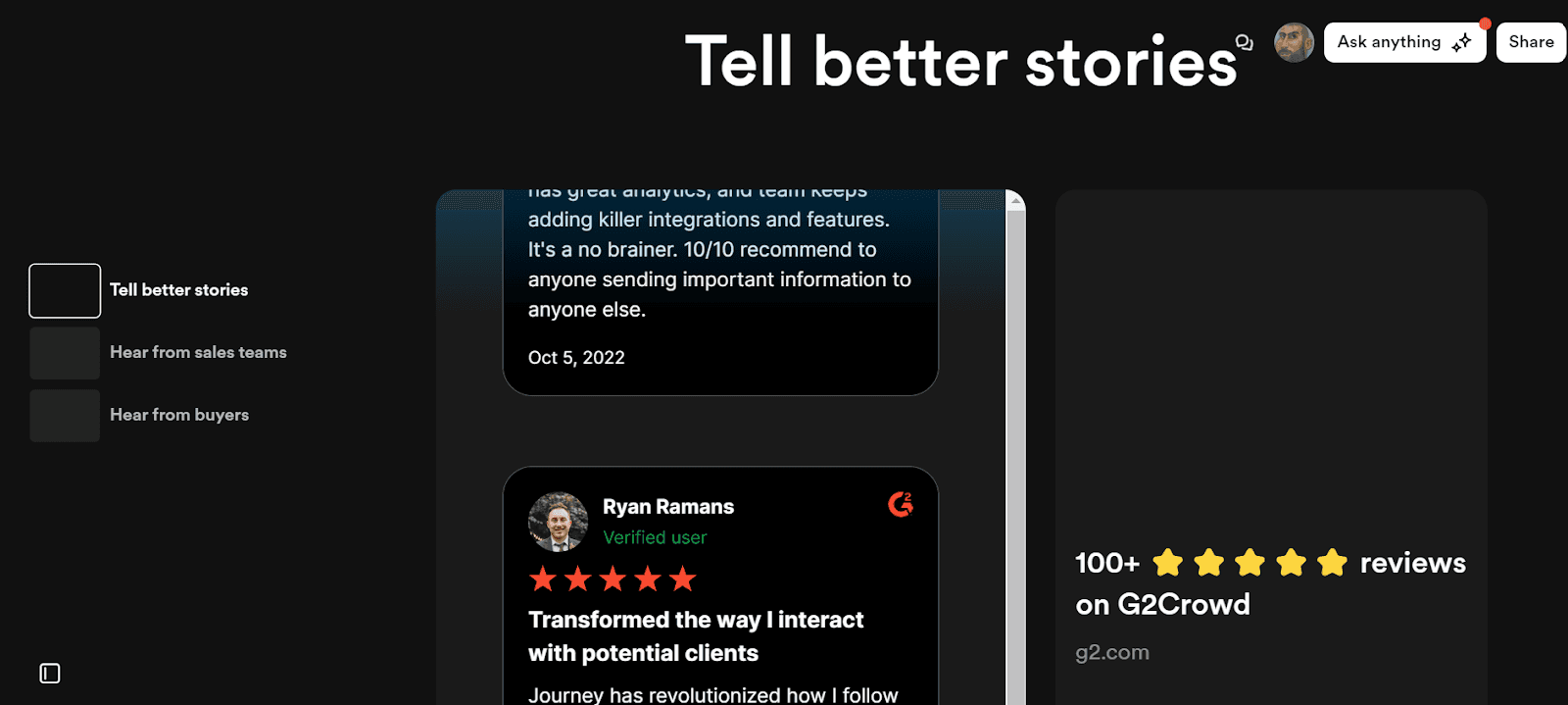
Use Visuals to Tell a Sales Story
If you're on someone's website and you see the following…
You’re less likely to think “These are badges.” Instead, you’ll think: “This product must be good.” It’s the story you tell yourself when you see visual legitimacy cues such as logos and badges – especially if they come from such a huge platform as G2.
It’s a similar thing with the logos from our happy customers:

It’s built this way so people can tell themselves, “Reddit? Gumroad? This must be a big deal.”
If simple icons and logos can tell a story, imagine adding other types of visuals to your sales content. It’s no wonder that visual assets get 40 times more shares, articles with images receive 94% more views, and videos result in 1200% more shares.
You can include visual elements in your sales by using…
Videos
Logo bars
Product screenshots
GIFs
Product walkthroughs
Graphics
Demos, especially interactive demos
Visuals are a huge part of our website, our content, our emails, and our sales pitches. Not only because Journey is a visual-centered platform, but because these visuals help users actually see the product in their lives before even trying it out.
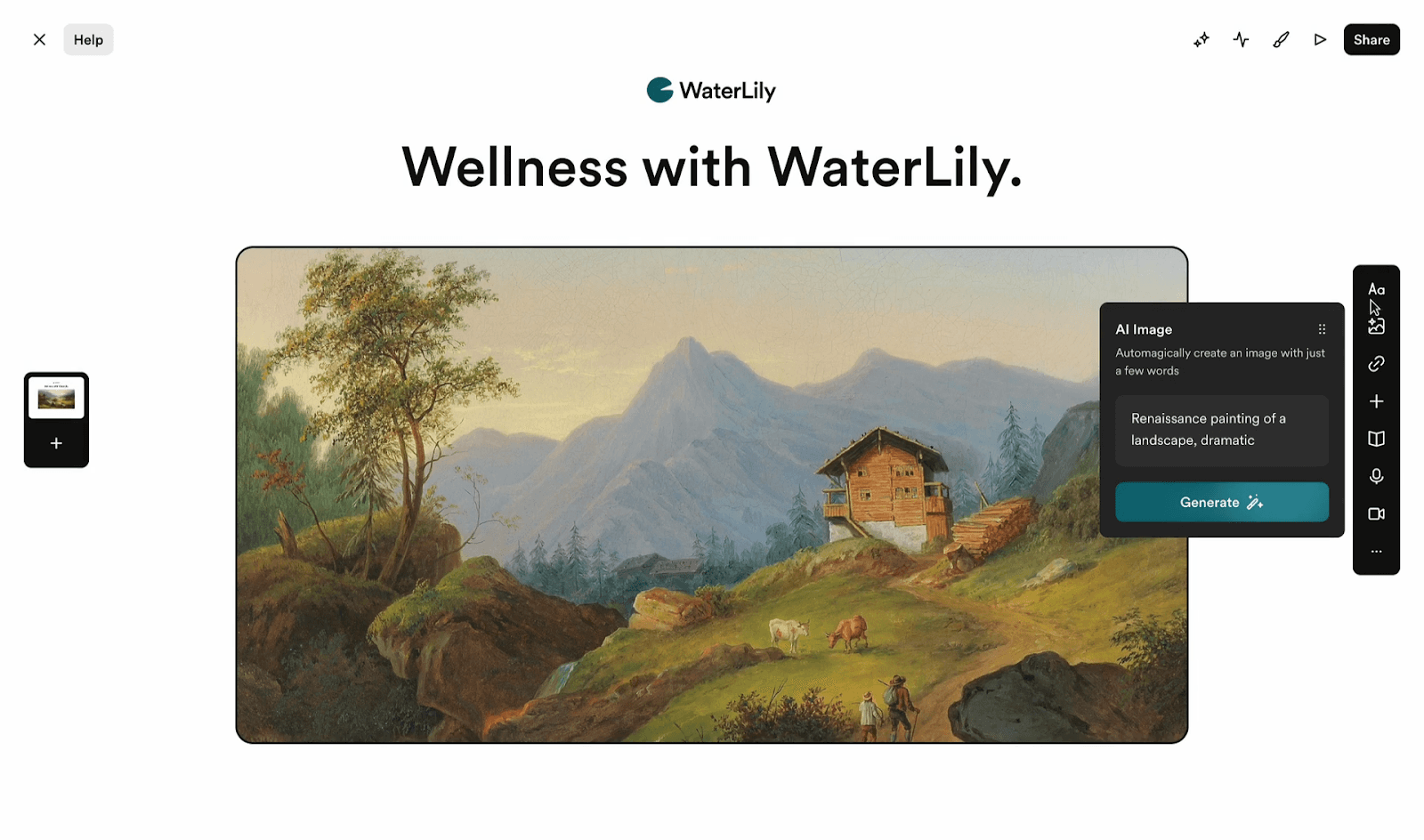
The Human Element
“What's in a name? That which we call a rose by any other name would smell just as sweet.” Juliet Capulet, Shakespeare
Juliet has clearly never gotten a no-reply email from a faceless company. Because when it comes to increasing open rates, a lot’s in a name.
A study conducted by Hubspot found that the personal email “Maggie Georgieva, HubSpot” outperformed the simple “HubSpot” email – both for open rates and click-through rates.

What could be the story behind this?
“There’s an actual working human being behind this email. And they’re calling me by my name, so that’s probably something I’d like to hear about.”
Of course, we’re in sales and marketing. So we know how automated and personalized emails work. But I’m talking about split-second mental shortcuts (heuristics) here.
Build familiarity and earn trust by showing friendly faces.
Wherever we can, we create Loom videos. Not only does it show our product in action, but it also shows our faces. People can hear our voices and connect with us on a deeper level. There will always be transcripts available to those who prefer it, of course.
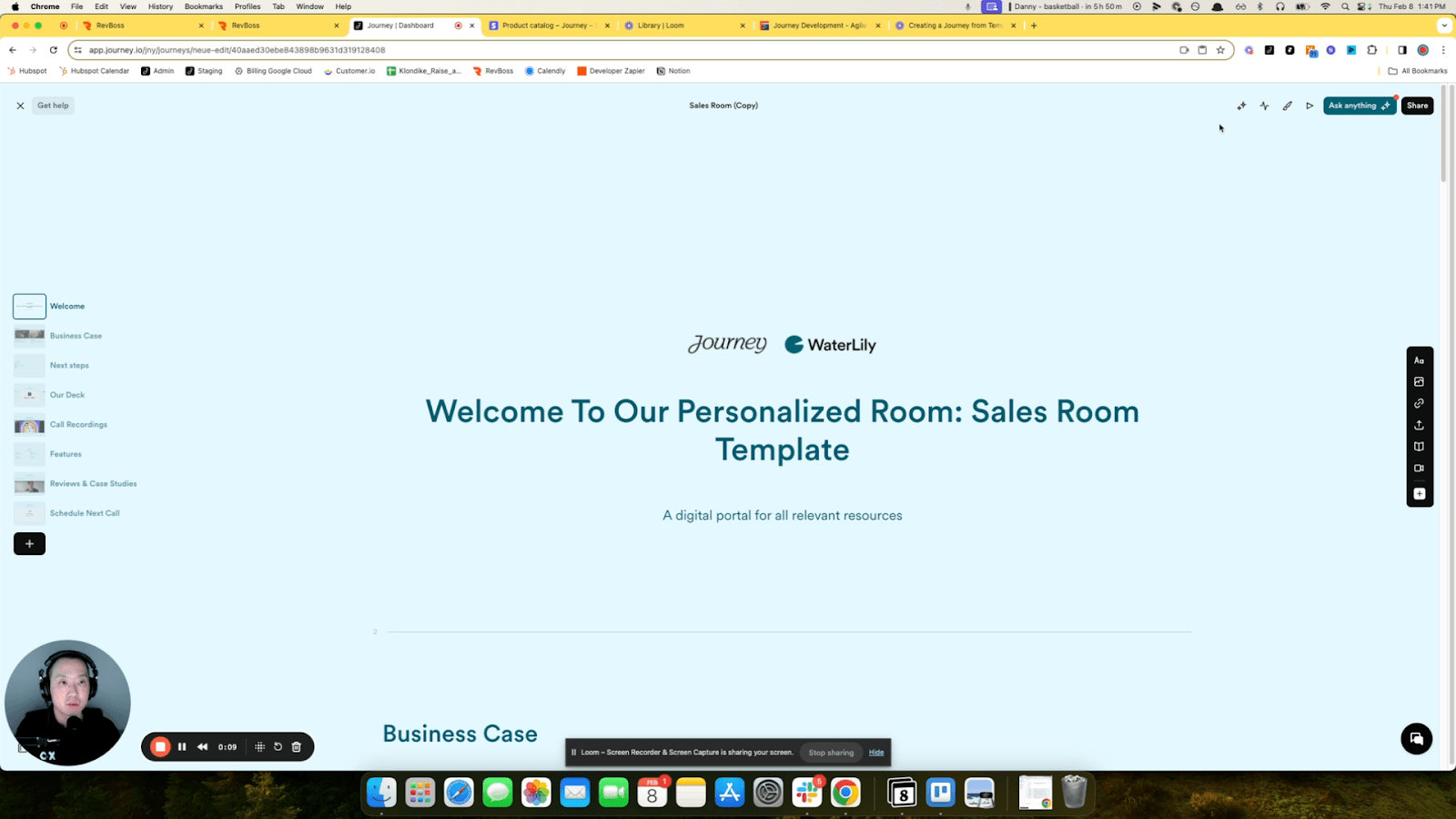
That’s why I’d recommend you to…
Incorporate friendly photos and your name across all touchpoints, particularly in follow-up emails. Make sure recipients can reply to your messages, fostering open communication.
Personalization is crucial at every stage. Even if video creation isn't feasible, opt for personalized responses whenever possible. It's easy for recipients to spot heavily templated messages, which can detract from the personal connection you're striving to build.
While automation can streamline processes and lighten the load for the sales team, it's vital to remain accessible when customers need assistance. Whether through prompt replies to emails or chats, being readily available demonstrates your commitment to customer satisfaction.
After all, it's the human connection that truly makes stories impactful.
Digital Sales Rooms Make Sales Storytelling Seamless
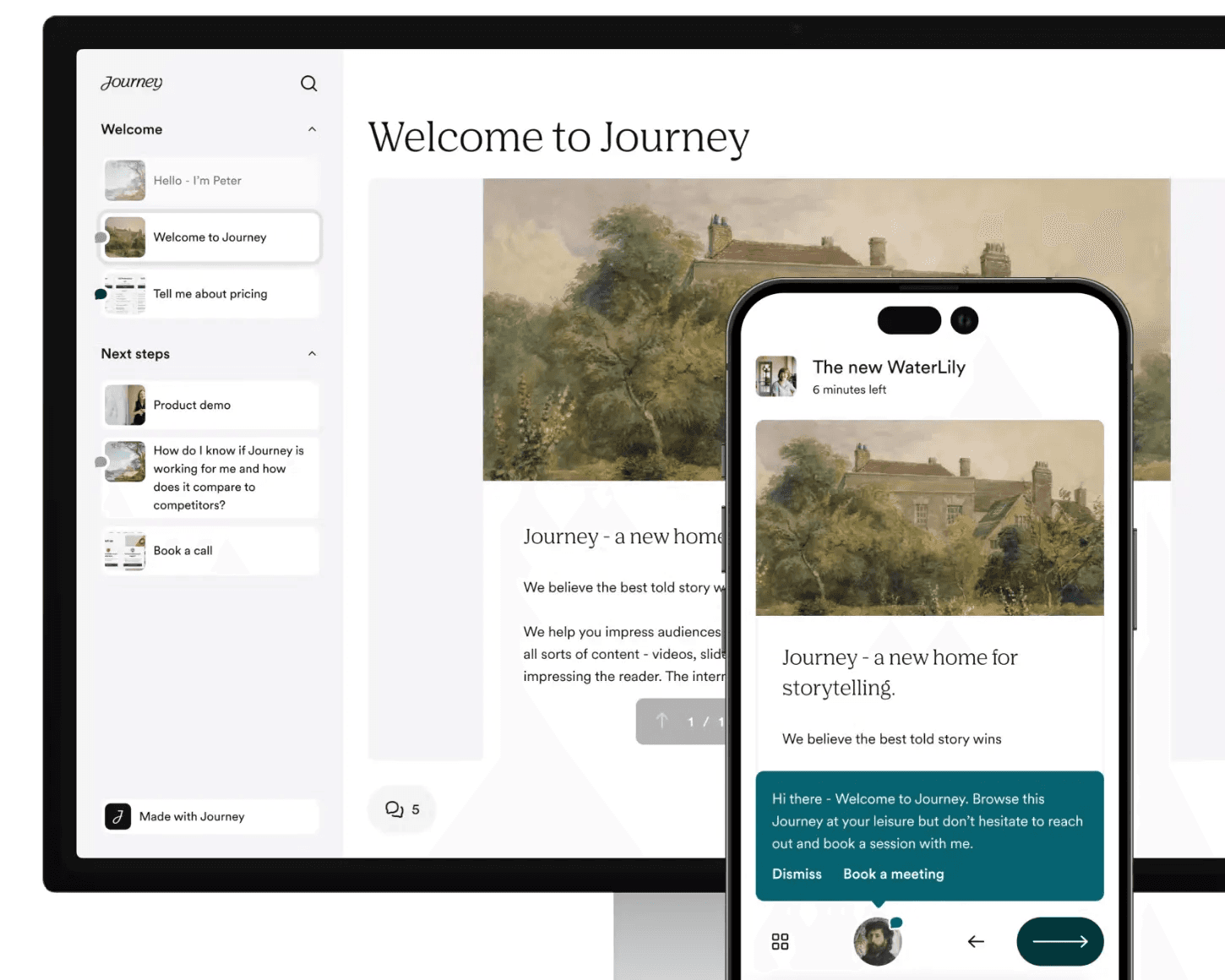
It’s one thing to tell your story across multiple channels. It’s quite another to keep the narrative consistent across the board with a digital sales room.
According to Jennifer Brennand, VP of Strategy, “Being present on multiple channels isn’t enough. Digital savvy audiences demand more customized experiences and frictionless customer journeys. As more millennials enter into decision-making roles within B2B businesses, these expectations apply to the B2B world too.”
“Frictionless” is the word. This is why Journey allows B2B sales teams to create beautiful, personalized content to enable champions throughout the sales process.
They can do that by combining PDFs, text, videos, and more, and sharing them with prospects in one easy-to-find location. Your story will be as clear, linear, and comprehensive as possible.

But How Exactly Does Journey Help Complicated B2B Sales Deals Move Forward?
Journey Prevents Stakeholders From Shuffling Chapters Around
You can’t skip chapters if you want to understand the full picture. Stakeholders, however, seem to be fans of looking at the last page of a book to see how the story ends.
Why am I saying this?
Emails are amazing for communication – not so much for linear communication.
For a lot of B2B sales teams, the “norm” remains to send multiple links in a follow-up email. This can induce friction, as links are often opened haphazardly – and sometimes not opened at all, making it incredibly hard to persuade the right people.
With Journey, all of your post-call sales collaterals can be easily shared in a single link and viewed in a slide deck (or carousel-like) way. No one will miss a single chapter.
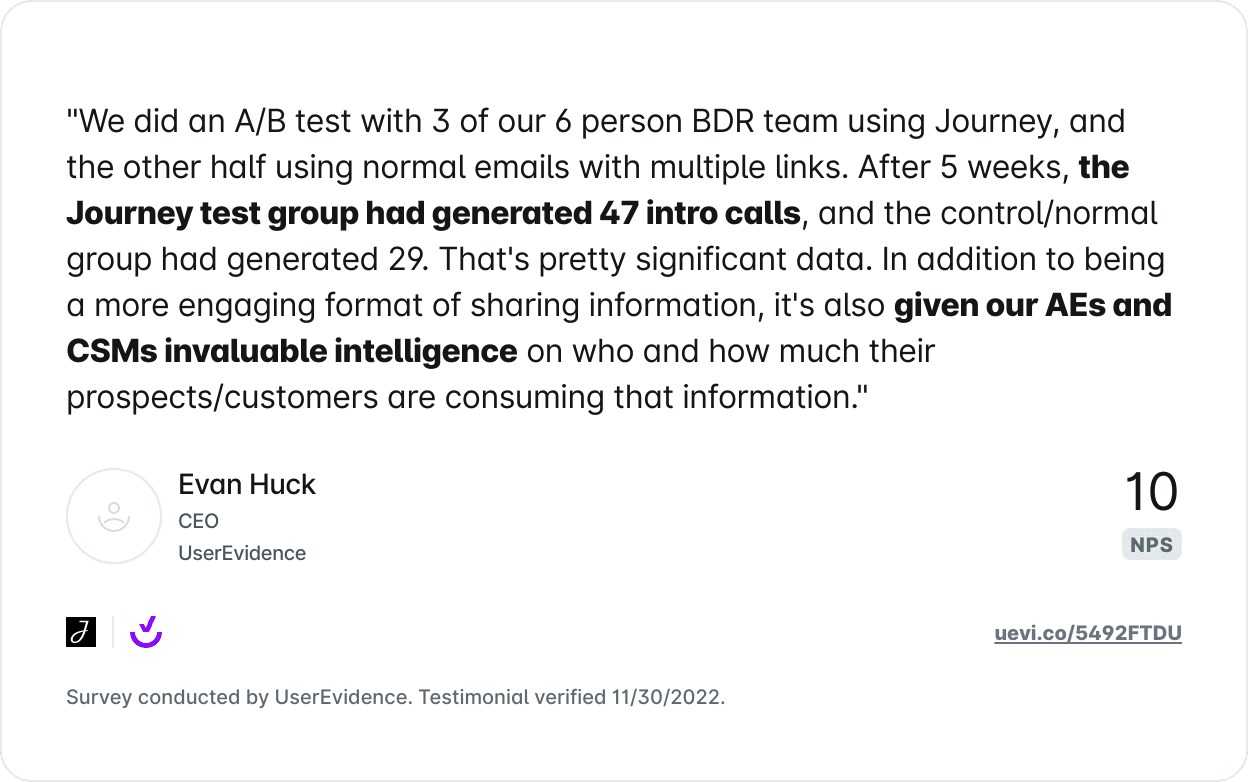
Seamless Integrations. Seamless.
Your story needs to knock people’s socks off. That can’t be done when the flow is interrupted. It’s like telling a joke and explaining it in the end. It rips it off of all entertainment.
You wouldn't normally think of a sales deck as "storytelling material.” At least not if your sales decks look like the stereotypical image that pops into your head when you think “sales deck.” You know, riddled with graphs, jargon, links, and the quintessential funnel image.
If you need a video to get your point across, make sure it can be easily played inside your sales deck. If a GIF perfectly encapsulates an emotion, make sure people can see it right then and there. And if people need to contact you, make sure they can book a call with you without leaving the page.
You can bring just about anything into your Journey – even interactive files like Figma and platforms like Calendly.
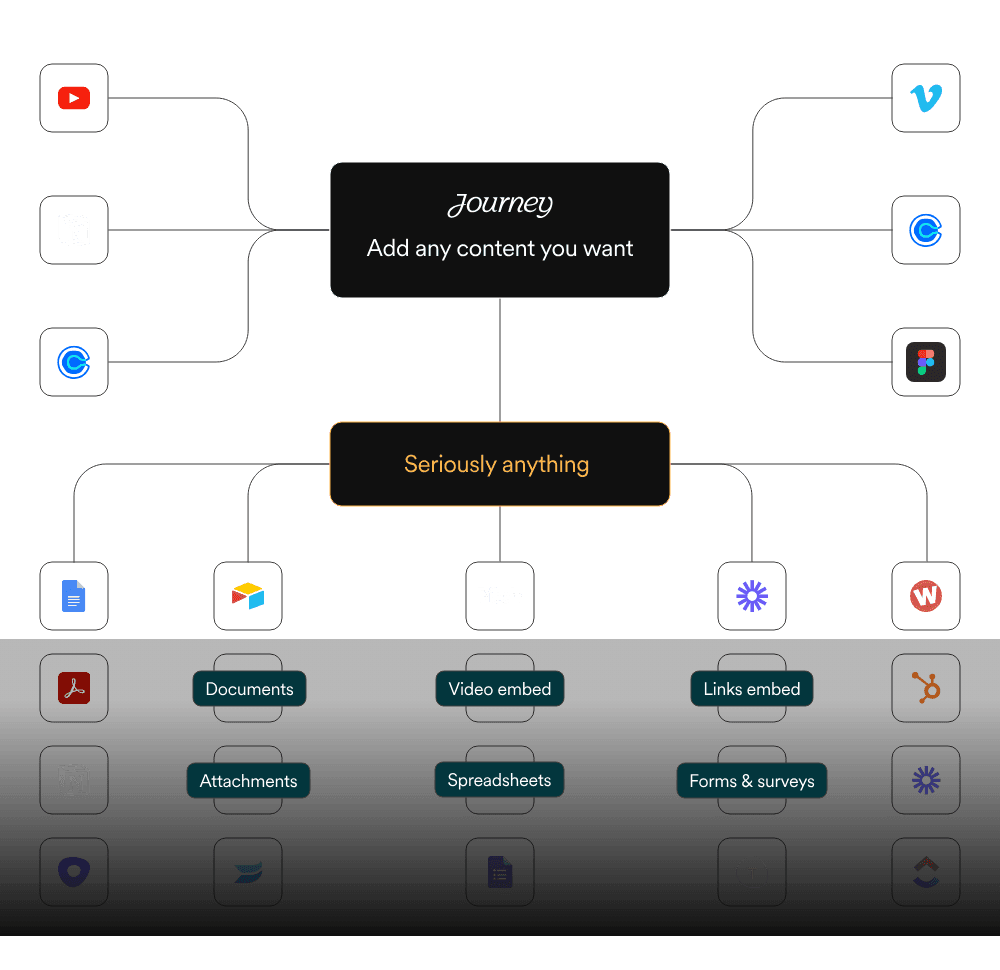
Keep Only Engaged Prospects

Think about that one teacher of yours – the one whose face used to light up when talking about their subject. You may not enjoy what they’re talking about, but listening to them is an entire experience in and of itself.
A story is a two-way street because it requires both a storyteller and an audience. The storyteller crafts the narrative to convey a message or evoke emotions. However, the audience's interpretation and engagement are equally important. They bring their own experiences, perspectives, and emotions to the story, influencing how they perceive and connect with your materials.
Without an audience to receive and engage with the story, its impact is limited. And therefore, storytelling is a collaborative process, where both the storyteller and the audience contribute to the overall experience.
Your story won’t have as much impact on unengaged people. This is why Journey helps you keep only the wide-eyed listeners in the room with insights on views, percent of Journey completed, and time on each page.
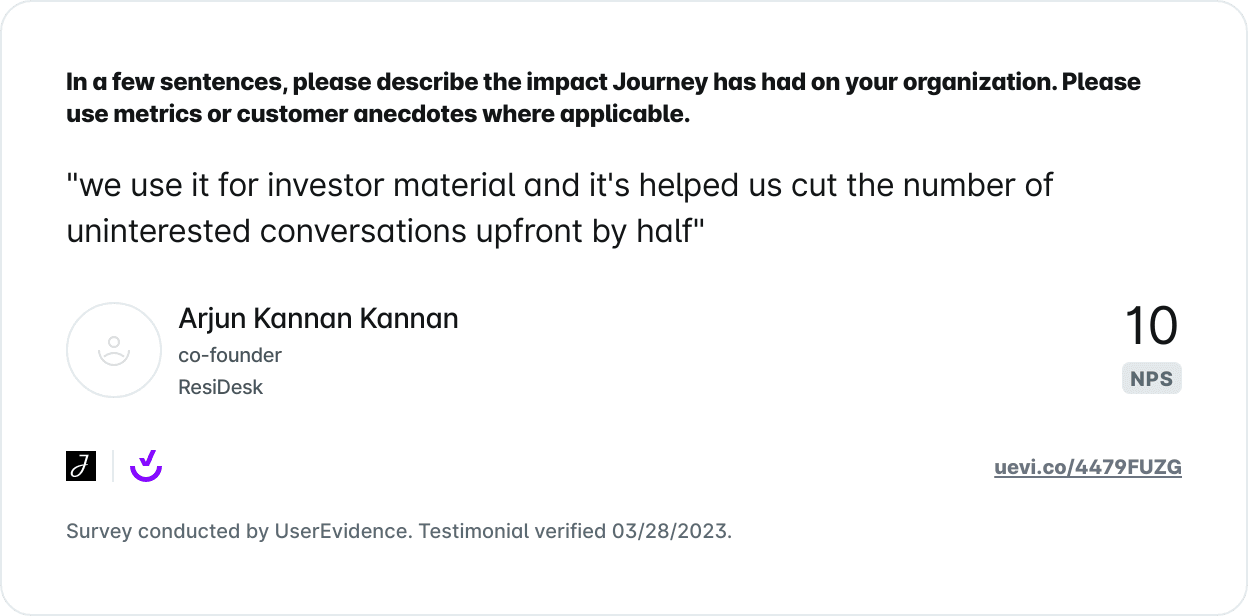
Stories Will Set Your Sales Process Apart
Stories stretch far beyond what the eye can see. And if you look close enough, you’ll find them in places where you never thought they could be, including in B2B sales.
Journey is storytelling reimagined for B2B – where you can create beautiful sales decks to empower champions and close more deals. Join us for free today!

